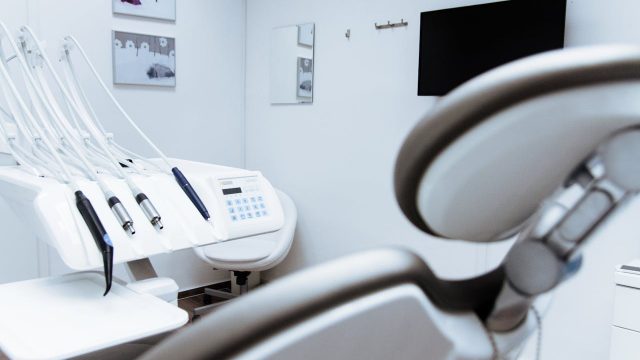By Sustainable Futures Trainings
Introduction
Field Safety Corrective Actions (FSCAs) are a critical component of post-market surveillance (PMS) in the medical device industry. They help prevent potential health risks by addressing product safety issues that arise after a device has been released to the market. FSCAs involve recalls, product corrections, software updates, labeling revisions, and communication of safety advisories.
For medical device manufacturers, effective FSCA management is crucial to ensuring:
- Patient safety through timely risk mitigation
- Regulatory compliance with global standards such as ISO 13485, FDA 21 CFR Part 806, EU MDR, and WHO Prequalification Guidelines.
- Brand integrity and trust by maintaining transparency with healthcare providers and end-users.
Failure to properly execute FSCAs can lead to severe legal consequences, reputational damage, and increased regulatory scrutiny.
This blog explores the importance of FSCAs, regulatory expectations, best practices for compliance, and the role of Quality Management Systems (QMS) in managing FSCAs effectively.

What is a Field Safety Corrective Action (FSCA)?
A Field Safety Corrective Action (FSCA) is any action taken by a medical device manufacturer or supplier to address a product issue that may pose a risk to patient safety, performance, or regulatory compliance.
Types of FSCAs
- Device Recall – Removing a device from the market due to safety concerns.
- Software Updates – Fixing software malfunctions that may impact device performance.
- Labeling Corrections – Updating instructions for use (IFU), warnings, or contraindications.
- Component Replacement – Replacing faulty or defective parts in the device.
- User Training or Field Safety Notices (FSNs) – Informing healthcare professionals about safety measures or new operating procedures.
Regulatory Requirements for FSCAs
FSCAs must be reported and managed in compliance with international medical device regulations.
- 1. EU MDR (Regulation 2017/745, Article 87 & 89)
- Requires manufacturers to report serious incidents and FSCAs within 2-15 days.
- Field Safety Notices (FSNs) must be issued to healthcare providers and users.
- FSCAs must be documented and tracked in the EUDAMED database.
- 2. FDA (21 CFR Part 806 – Medical Device Corrections & Removals)
- Manufacturers must report any correction or removal that reduces health risks.
- FSCAs must be documented with the FDA recall classification system (Class I, II, III).
- 3. WHO Prequalification Guidelines
- FSCAs should be monitored and analyzed as part of a post-market surveillance (PMS) system.
- Manufacturers must provide corrective action reports and effectiveness evaluations.
Source: EU MDR FSCA Reporting Guidance
FSCA Reporting and Management Process
| Step | Description |
|---|---|
| Incident Detection | Identify and document device malfunctions, failures, or complaints. |
| Risk Assessment | Evaluate the severity, frequency, and impact of the issue. |
| Regulatory Notification | Report the FSCA to regulatory authorities (EU MDR, FDA, WHO). |
| Corrective & Preventive Actions (CAPA) | Implement necessary corrective actions (recalls, software updates, labeling changes). |
| Communication & Stakeholder Engagement | Inform healthcare providers, users, and distributors through FSNs. |
| Effectiveness Evaluation | Monitor and verify if the FSCA resolves the identified risk. |
Best Practices for Effective FSCA Management
- Develop a Robust Post-Market Surveillance (PMS) System – Use real-time safety monitoring to detect potential risks early.
- Use Risk-Based Approaches – Prioritize FSCAs based on risk severity and regulatory impact.
- Ensure Transparent Communication with Regulators & Stakeholders – Provide detailed FSNs and collaborate with health authorities.
- Integrate FSCAs into QMS & CAPA Programs – Ensure root cause analysis (RCA) and preventive actions are properly implemented.
- Automate Documentation & Reporting – Use electronic FSCA tracking systems to enhance traceability and compliance.
Challenges in FSCA Management & Solutions
- Challenge 1: Delayed Reporting & Compliance Risks
- Solution: Implement automated tracking systems for timely incident reporting.
- Challenge 2: Inefficient Communication with Healthcare Providers
- Solution: Use digital platforms to issue instant safety alerts and field notices.
- Challenge 3: Managing Global Regulatory Variability
- Solution: Develop a centralized regulatory compliance database to manage regional FSCA requirements.
- Challenge 4: Lack of Root Cause Analysis (RCA) Integration
- Solution: Integrate RCA tools (such as Fishbone Diagrams or 5-Why Analysis) into FSCA workflows.
Final Thoughts
Field Safety Corrective Actions (FSCAs) are essential for maintaining medical device safety, regulatory compliance, and public trust. A well-structured FSCA management system, integrated with QMS and CAPA frameworks, ensures that corrective actions are implemented efficiently and transparently.
With advancements in real-time safety monitoring and predictive analytics, future FSCA management will become more proactive, data-driven, and regulatory-compliant.
Disclaimer:
This blog is for informational purposes only and does not constitute professional or legal advice. Always consult regulatory authorities or compliance experts for official FSCA guidance.
This article first appeared on Sustainable Futures Trainings’s website and is published here with permission.

